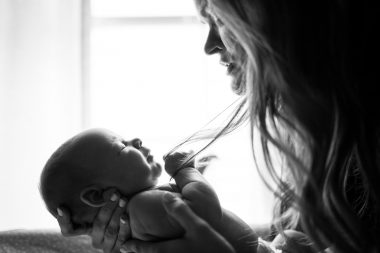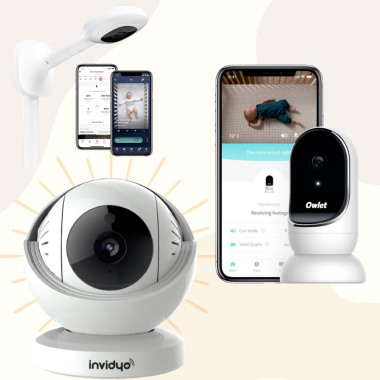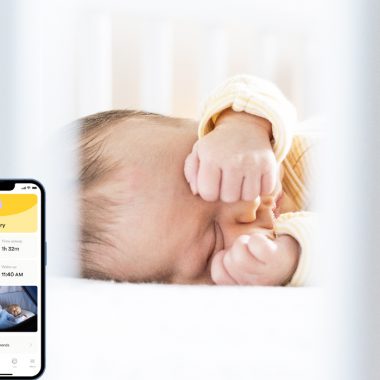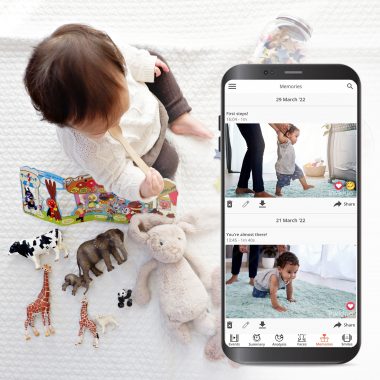It’s that time of the year when the cold sets in. The weather is changing, and with it, everyone is prone to getting sick.
While adults and us, parents, can still take preventative measures to reduce our risk of illness, it is harder to do so with babies.
Because infants have a weaker immune system that is still immature, their risk of contracting illnesses is much higher.
For that reason, we must pay extra attention to our babies so we can recognize and prevent newborn illness at the earliest.
One of the most common ways to detect newborn illness is through changes in how they cough and cry. Given that babies can only communicate via crying, during the first few months, it is very important to understand their crying patterns.
Infants don’t always display obvious signs of illness. That is why it is important to pick on any cues, which mostly manifest in the form of crying and coughing.
Sometimes, it is common for parents to think baby crying is normal. After all, babies do cry. A lot.
But not all crying is normal.
Table of Contents
Recognizing Newborn Illnesses
There are several hints and signs that indicate your baby is unwell. According to Family Doctor, some of the most obvious signs of illness in newborns are:
- Crying more often
- Coughing
- Irritability
- Diarrhea
- Vomiting
- Changes in feeding patterns
- Lower or higher body temperature
- Weaker sucking reflex
- Longer periods of sleep
- Dehydration (dry mouth and lesser urination)
- Trouble in breathing
- Changes in skin color (paleness or yellow skin)
Most of these signs indicate a later stage of sickness. The earliest indicators are changes in crying and feeding, coughing, and visible irritability (which also manifests as crying).
Changes In Crying
Since babies communicate through crying, it is important to notice changes in their crying habits.
Family Doctor reports that changes in crying can sound like a weaker, stranger, or frantic cry. You will also notice that it is more difficult to soothe your baby.
These crying sessions will also appear for no apparent reason. It won’t be easy to find the cause.
For instance, newborns usually cry because of:
- Hunger
- Discomfort
- Dirty diapers
- Feeling lonely
- Lack of sleep
However, if you notice that your baby has just been fed, is not suffering from lack of sleep, does not have dirty diapers, and is provided with sufficient comfort and cuddles but is still crying, then your baby might be ill.
Before any illness manifests in full form, underlying symptoms begin to surface. These are mostly only felt by the baby before you can visibly notice them.
For example, as per Health Direct, body aches, soreness, headaches, irritability and nausea are only felt by the baby. This can cause them to cry for what you might believe to be no apparent reason.
Decoding Baby Coughing
Babies do not usually cough when younger than 4 months old. While coughing is not inherently a dangerous sign, it could cause for concern if your baby is less than four months old.
If you notice that your baby is coughing, it can help if you understand the type of cough. There are two main types of coughing: wet and dry.
Baby coughing with a stuffy nose
The common cold likely causes coughing paired with a stuffy nose. You will notice other symptoms, such as:
- Watery eyes
- Decreased appetite
- Slight fever
- Sneezing
Baby coughing with labored breathing
If you notice that your baby has difficulty breathing and is also coughing, they might have Respiratory Syncytial Virus (RSV).
RSV exhibits cold-like symptoms and can also lead to more serious illnesses such as bronchiolitis or pneumonia.
It is common for infants to get RSV between the months of November and mid-March.
Symptoms include:
- Wheezing
- Fast cough
- Severe fatigue
- Changes in skin tone (blue or gray lips)
- Faster breathing
- Fever
You will also notice that your baby’s cough continues to worsen.
Baby barking cough
A barking cough could indicate croup (an infection in the vocal cords, windpipe or bronchial tubes).
Symptoms of croup include:
- High-pitched whistling when breathing
- Worsening cough by nighttime
Baby cough with a whooping sound
When you notice a “whoop” sound while your baby coughs, chances are your baby has whooping cough.
This is a highly contagious respiratory tract infection and causes your baby to cough continuously for 20-30 seconds.
You can detect this earlier by noticing the following symptoms up to 2 weeks before the illness sets in:
- Mild cough
- Cold flu-like symptoms
- Sneezing
- Runny nose
Baby cough with thick mucus
Thick mucus that is green or yellow paired with coughing is a sign of cystic fibrosis. It is one of the more common sicknesses in babies and affects 1 in 3,000 babies in the United States.
Other symptoms paired with cystic fibrosis include:
- Persistent sinus infections
- Large greasy stools
- Salty-tasting skin
- Inability to gain weight
Baby persistent cough
Persistent coughing that lasts about a week or more that is not accompanied by any other symptoms can be caused by a blocked airway.
Chances are that your baby may have inhaled or swallowed an object. This is more common in babies that have started moving around.
However, it can also manifest in younger babies if you are not careful with their surroundings. This is precisely why it is very important to keep smaller objects away from babies and to baby-proof their environment.
Baby habitual cough
Funnily enough, sometimes babies cough just to test out their voice. Sometimes, it can also occur out of sheer habit, particularly if your baby has just recovered from any illness that also caused coughing.
If your baby is healthy and there is no cause for coughing, wait it out. Your baby will eventually stop coughing all on their own.
Given all the different causes for coughing and the various types of crying and coughing infants exhibit, it is very important to understand their cough and cry habits or patterns.
A simple and highly efficient way to track your baby’s health is with Invidyo’s Smart Cough & Cry feature.
What Is The Invidyo Cough & Cry Feature
Invidyo’s Smart AI Monitor is equipped with several useful features that help improve the quality of your and your baby’s life.
One such feature is Cough & Cry Analysis. Invidyo is the only baby monitor that provides parents with Smart Cough & Cry Analysis.
The monitor records every time your baby cough or cries on an hourly basis. It provides you with a daily and weekly summary of how often your infant coughed or cried and for how long.
In addition to that, the monitor also pairs each cough or cry instance with an accompanying video. This allows you to see exactly when and why your baby was in distress.
The Cough & Cry Analysis feature helps you detect the source, cause, and reason behind your baby’s discomfort.
How Does Invidyo Smart Cough & Cry Work
The Invidyo App collects all relevant data for you, without any input required from your side.
Using AI, your App will collect metrics for Cough and Cry using numeric representation for:
- How many times your baby coughs or cries
- At what time your baby coughs or cries
- For how long your baby coughs or cries
These metrics are displayed on an hourly, daily, and weekly basis.
The App also gives you a summary of:
- Total Cough and Cry Counts
- Total Duration of Cough and Cry
- Longest Coughing and Crying spells
Studying these metrics will help you better understand your baby’s health. Plus, you can watch a recorded video of exactly when your baby coughs or cries.
Why You Need Invidyo Cough & Cry
As parents, we understand that you cannot always be around your baby 24/7. Whether running errands or working or tidying up the house, there will be moments when you are not within sight or earshot of your baby.
But with the Invidyo Smart Monitor installed in your nursery, your personalized baby care companion will be your eyes and ears at all times.
You can check in on your baby through the App from anywhere at all, at any time you’d like. Besides, the Smart Notification will also keep you informed of your baby’s well-being and surroundings around the clock.
Checking In With A Doctor
The Invidyo Cough And Cry feature also greatly assists with your doctor’s visits. If you are concerned about your baby’s health and take them to their pediatrician, your doctor will ask a few questions to diagnose any illness.
- When did your baby start coughing and/or crying
- How long has your baby been coughing and/or crying
- How often do the coughing and/or crying spells occur
- What is your baby’s response to soothing techniques
- Are there ant changes in bowel movements or feeding habits
Being equipped with a thorough breakdown of your baby’s coughing and crying patterns will help you answer your doctor’s questions in a more informed manner.
This will help your doctor diagnose your baby’s illness more effectively. That is why Invidyo is the ultimate personalized baby care companion.
Learn More About Your Personalized Baby Care Companion!
Sources: msdmanuals.com, babycenter.com, healthdirect.gov.au, familydoctor.org










